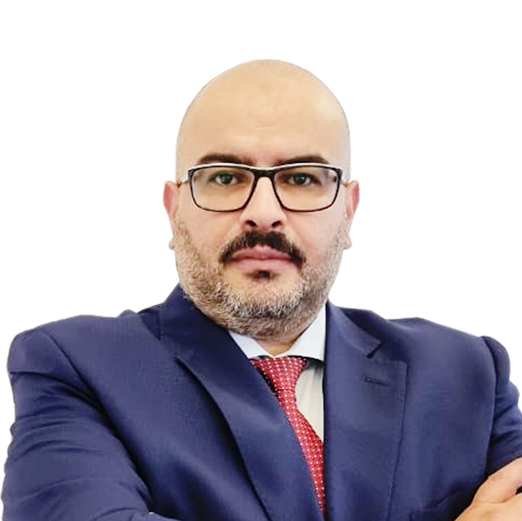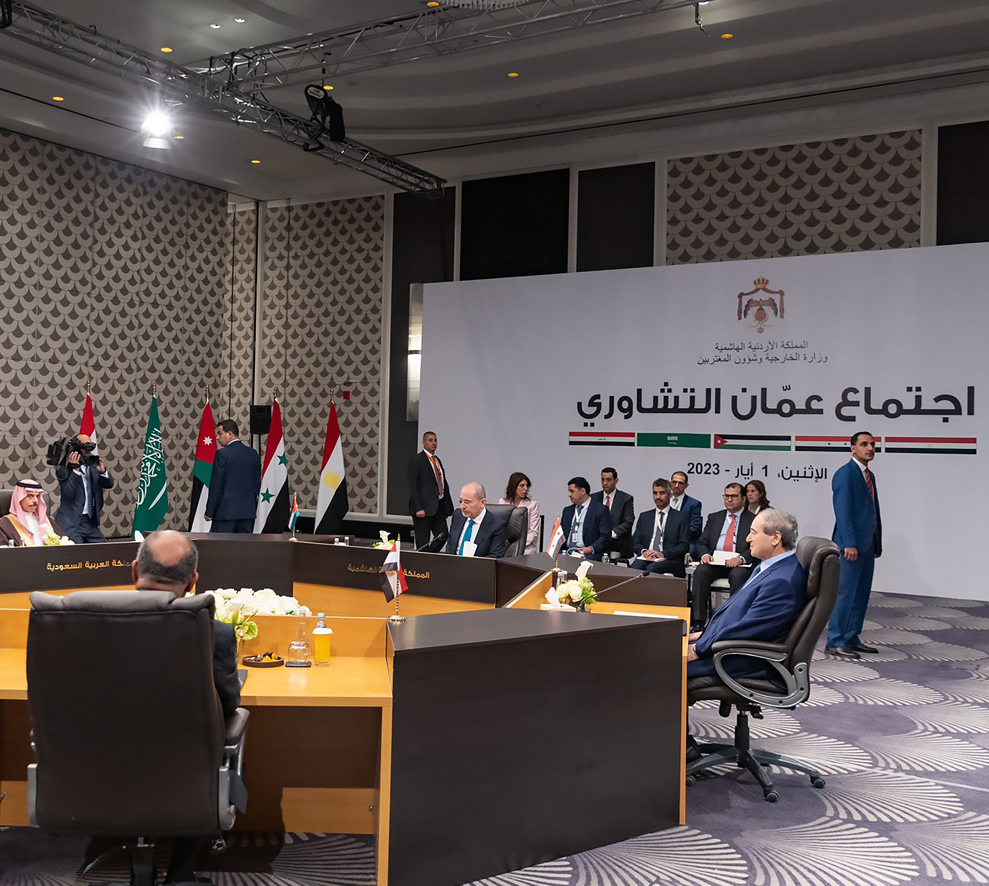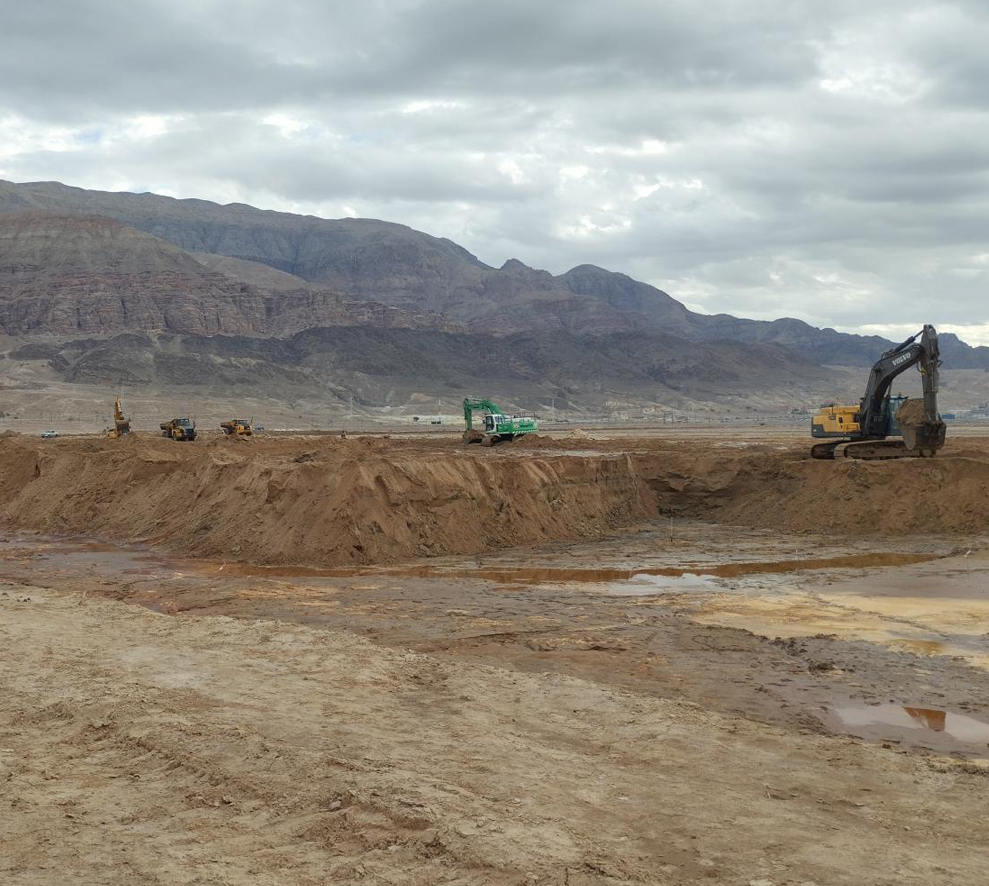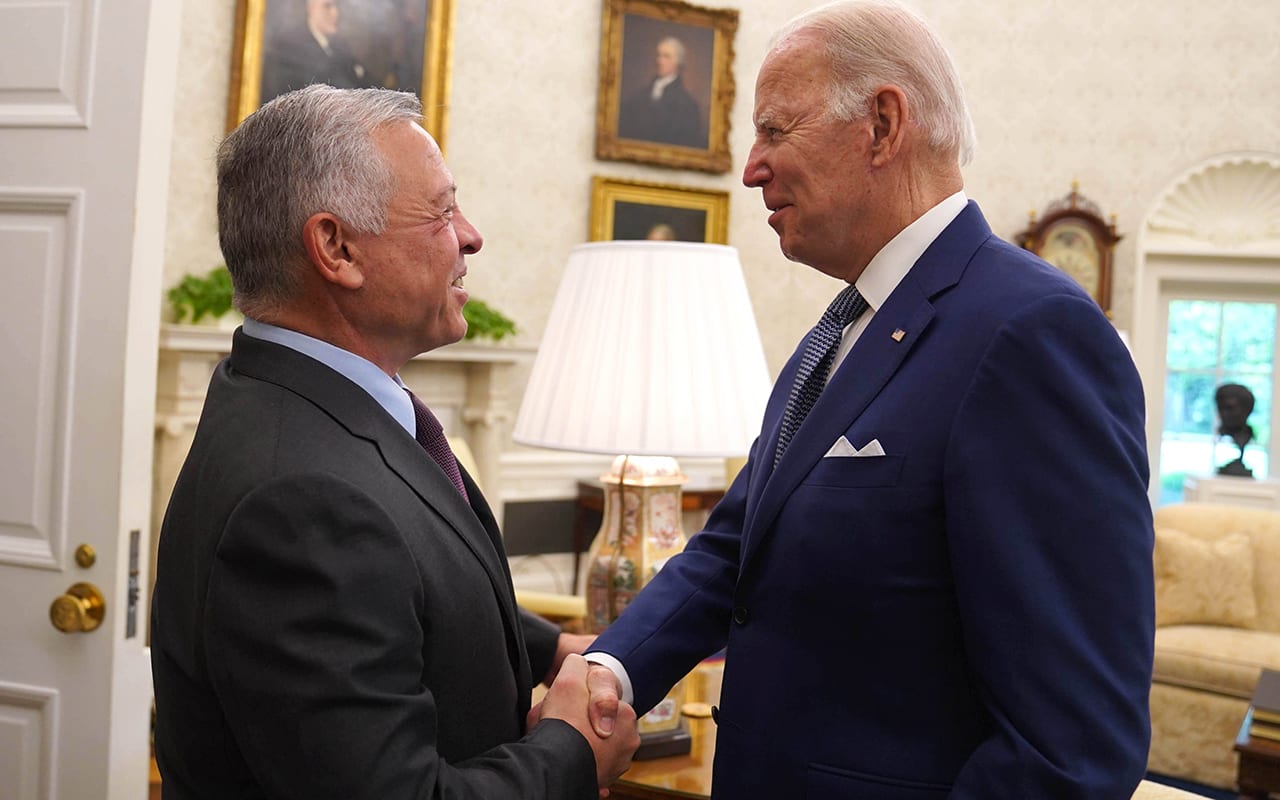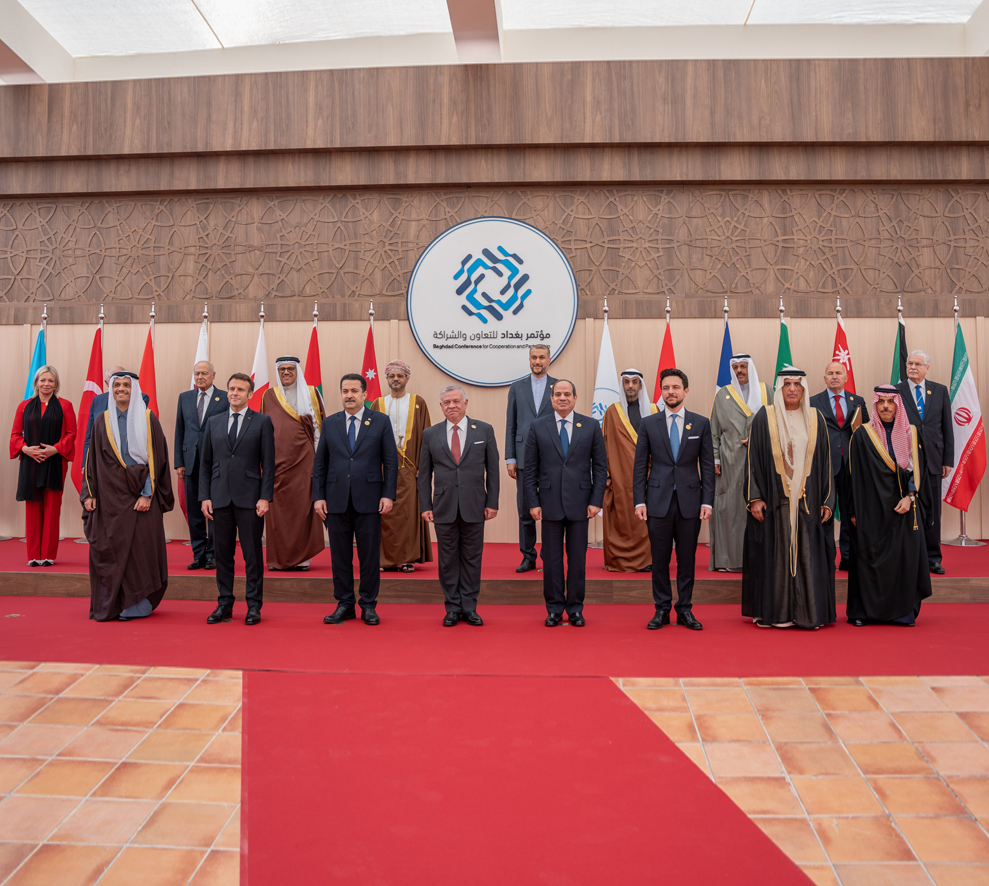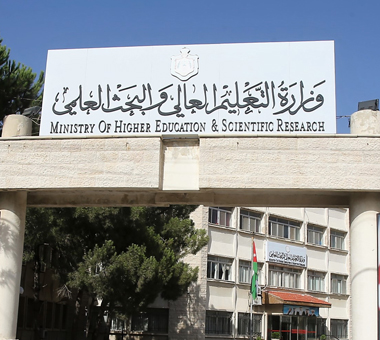The Amman Consultative Meeting initiated by the Jordanian Ministry of Foreign Affairs with the participation of the foreign ministers of Jordan, Saudi Arabia, Egypt, Iraq, and Syria on May 1 was a continuation of the Jeddah Consultative Meeting hosted by Saudi Arabia on April 14 to reach a “political solution to the Syrian crisis,” noted Jordan’s Deputy Prime Minister and Minister of Foreign Affairs Ayman Safadi. The meeting in Amman to draw a roadmap for Syria’s return to the Arab League was held after a series of unilateral and gradual Arab steps for rapprochement with the Syrian government, the latest of which were the April visits of the Saudi foreign minister to Syria and the Syrian foreign minister to Saudi Arabia and Egypt. The Amman Meeting, held a few weeks before the Arab League summit is scheduled in Saudi Arabia on May 19, carried many indications and implications concerning the future of Arab-Syrian relations, associated policies, and trends, especially as the final status frameworks are complicated due to the intertwining of Syria’s non-Arab relations, specifically with Iran.
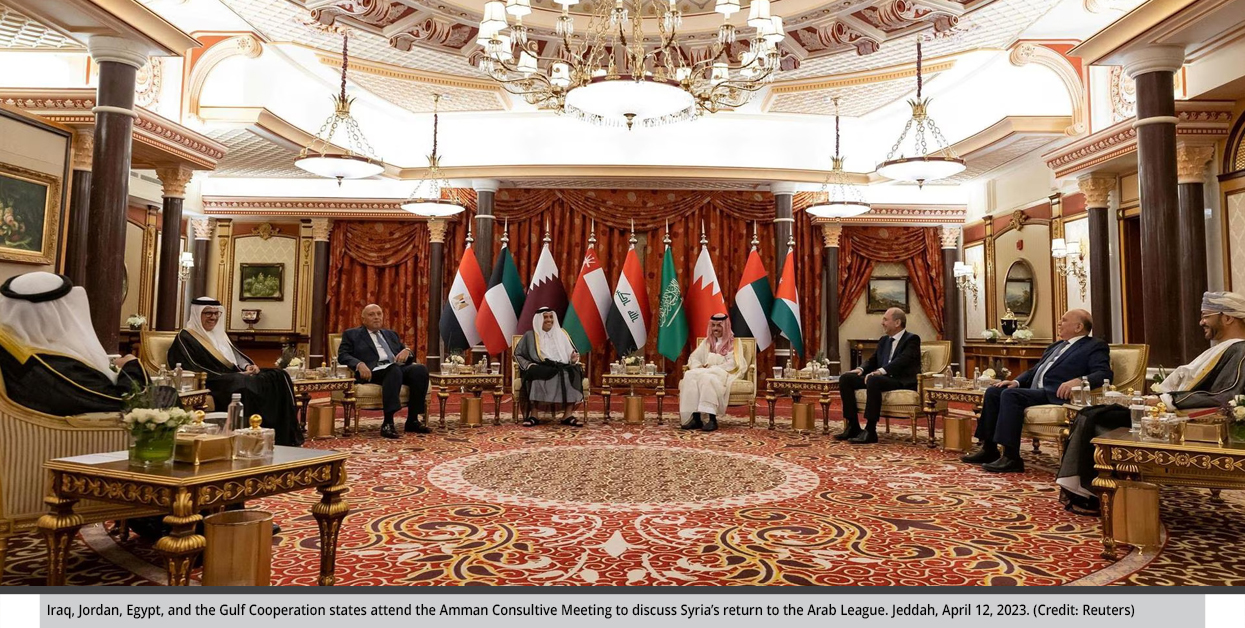
Interpreting the Contents of the Final Statement
Unlike similar meetings, the final statement of the Amman meeting was detailed and thorough, closer to a clear roadmap that includes the basic commitments of the participating countries in determining the frameworks through which they seek to bring Damascus back to the Arab fold. Safadi’s statement emphasized the Arab role in resolving the Syrian crisis in light of Jordan’s proposal for an Arab initiative based on a political solution in Syria in accordance with international references, especially UN Security Council Resolution 2254. It seems that the participating countries may seek later to internationalize their close positions with Damascus.
Cooperation with the government in Damascus in the fields of security and counter-terrorism means developing an Arab policy that supports Damascus extending its sovereignty over the territories controlled by armed groups. It also means that such efforts are taking a role in crowding out other non-Arab forces in Syria that have claimed that their presence in Syria over the past years was to support the Syrian government in its military operations against armed groups.
In return for the emphasized Arab role regarding these two points, Damascus has several obligations to undertake. These include taking serious steps to combat the manufacturing of narcotics within its territories and stopping the smuggling of narcotics across its borders into neighboring countries, especially Jordan and Iraq.
To that end, joint political and security working groups comprising individuals from Syria, Iraq, and Jordan will be formed to identify the sources of narcotics production and smuggling inside Syria; the entities that organize, manage, and carry out smuggling narcotics across the Syrian borders; and the necessary steps to end such operations.
The Syrian government must also demonstrate the seriousness and bona fide intentions of its steps to comply with Arab demands, as seen in the news circulating from inside Syria regarding the issuance of a general amnesty and the Syrian government’s decision to open the Bab al-Salama crossing for humanitarian and medical aid following the devastating earthquake in February. In addition, to follow up on the outcome of the Amman meeting and determine the next steps, Arab countries will be weighing the level of Syrian cooperation with the aforementioned working groups.
Important Conclusions in the Syrian Arab Roadmap
- According to the Arab initiative and the Syrian-Arab meetings, the final results will lead to the same result sought by the international community: finding a political solution that ends the crisis in Syria. Safadi’s final statement also made no mention of economic partnerships or reconstruction processes, so that the Arab steps do not contradict the U.S. Caesar Act.
- Forming a Jordanian-Syrian-Iraqi committee to combat the manufacturing and smuggling of narcotics within Syria and beyond its borders, as well as determining the committee’s tasks and objectives, is in line with U.S. law regarding combating the manufacturing of Captagon inside Syria. The success of this committee may open the way for U.S cooperation with the committee.
- The outcomes of the final meeting are seeking to prepare Syria, at the security and political levels, to enhance the appropriate conditions for the refugees to return by extending the Syrian government sovereignty over its territories and rationalizing its policies and the enforcement of law and order.
- The new Arab role towards Syria, in the aspects of combating narcotics smuggling and in supporting a political solution, is intended to make other non-Arab parties in Syria lose their political and security leverages, and thus crowd out the non-Arab role in Syria and replacing it with an Arab one.
- The final statement focused on partial solutions instead of macro solutions, perhaps because the Arab countries realize the difficulty of reaching an immediate political solution. This difficulty that can be overcome by resolving partial issues related to the settlement, including combating terrorism, restoring Syrian sovereignty over the territories controlled by armed groups, and preparing Syria for the return of refugees.
- The working committees, and following-up of the implementation of its outputs, indicate that the Amman Collective Meeting will be followed by similar upcoming meetings. It seems that they are working separately on the issue of Syria’s return to its seat at the Arab League, which is still opposed by some Arab countries.
Parallel Regional and International Challenges
In contrast to the Arab efforts to bring Syria back to its Arab depth through gradual steps and partial goals, and also in contrast to the Arab policies aimed at resolving the crisis that has been ongoing since 2011, we find that there are other non-Arab policies that may limit or hinder the efforts led by a group of Arab countries.
First, there are parallel Iranian efforts that can be interpreted as anticipatory attempts to prevent its relations with Syria from being affected by any Arab effort against Iran and to preserve Iran’s strategic interests in Syria. In this context, it is possible to consider two important events.
The first is the multiple meetings of the Syrian-Iranian Joint Economic Committee in Damascus on April 26 in which it was agreed to develop cooperation between the two countries in the fields of energy, electricity, petroleum, tourism, transport, culture, insurance, banking, and customs. The cooperation included assisting the Syrian fleet, providing manpower, and inaugurating the Iranian port of Hamidiya in exchange for Iran’s renewal of its request for 5,000 hectares of Syrian agricultural land to conduct agricultural experiments.
The second event is the May 3 visit of Iranian President Ebrahim Raisi to Syria accompanied with a “large political and economic delegation,” as stated by the official Iranian News Agency (IRNA), which described the visit as “very important, given the changes and developments taking place in the region.” This visit is the first of its kind by an Iranian president since 2011 and was preceded by a visit by Syrian President Bashar al-Assad to Tehran in May 2022. The Iranian president’s visit was expected to result in the signing of joint agreements in the fields of energy and electricity, specifically on the new Iranian credit line that is being invested in the electricity sector.
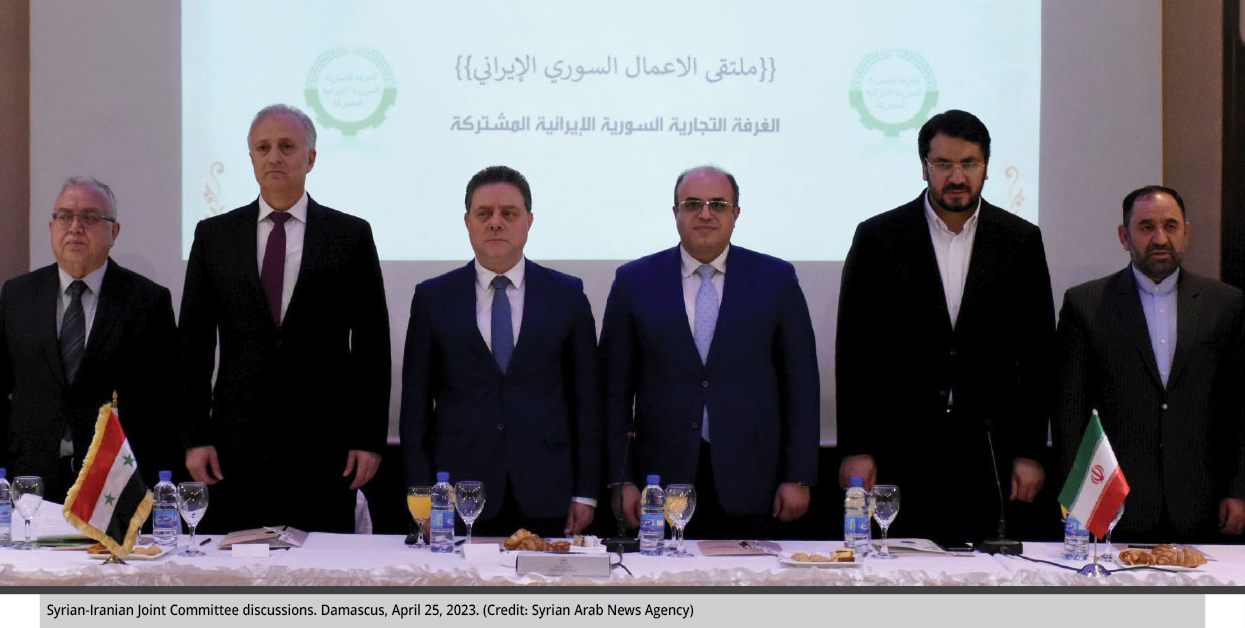
Second, Russian political interests are an influential factor in Syria. The Russian general principles are compatible with the Arab effort in terms of preserving the unity of Syria and the extension of the Syrian government’s sovereignty over all territories. Russia has supported the Arab rapprochement with Damascus for years, but the Russian preoccupation with the Ukrainian crisis, which was reflected on Syria in its strategic considerations, made the Arab rapprochement be in a lack to an important international dimension that supports Arab orientations.
Third, Western countries, especially the United States and the European Union, are intransigent in their position towards the solution in Syria, insisting on proceeding with the final solution prior to approving any political understandings or lifting the economic sanctions on Syria. While the Arab diplomacy towards Damascus was active after the devastating earthquake in February, Western countries continued to tighten sanctions on Syria, the latest of which was new sanctions imposed by the European Union on 25 individuals, and eight entities on charges related to smuggling narcotics, as well as issues related to human rights.
Fourth, there are signs of establishing a framework that includes Syria, Iran, Turkey, and Russia with a set of commitments and demands that may contradict or oppose the outcomes of the Amman Consultative Meeting. Each country in the Quartet Framework has its own demands, strategies, and agenda, while the concerned Arab countries proposed solutions to the entire Syrian territories, including the issue of refugees and files related to the final solution frameworks.
However, what distinguishes the current Arab steps is that the Arab countries are adopting gradual policies based on realistic steps and partial achievable goals. These steps and goals are not aimed to provoke the anger of the concerned countries and parties, whether Iranian, Russian, or the West. The Arab approach is an alternative to relying on Western demands to reach a final solution to the Syrian crisis. It took steps toward rapprochement and openness, which, for over a decade of the crisis, were difficult to implement since they required many tools that ignored the diplomatic dimension in their aspects.
Finally, the Amman Consultative Meeting can be seen as a base for forming a framework to establish an Arab working group that can implement a gradual strategy for a solution in Syria and to first rehabilitate the country for its return to the Arab League and then the international community, in accordance to a set of commitments and demands based on a “Quid pro quo” approach.
Therefore, it is likely that the coming days will witness a series of similar meetings. This is confirmed by a Saudi official in a recent statement to the Financial Times: “Just because you’ve opened up the channel of discussion doesn’t mean that’s it,” the senior Saudi official said. “It’s not opening totally, but without that engagement . . . you can’t negotiate what you need” At the very least, it can be said that the recent Arab moves contributed in breaking the isolation of Syria. The debate now is about what Damascus is demanded to implement in exchange for a return to the Arab fold and the international community, instead of rejecting the entire idea and associating it to the inability to rehabilitate the Syrian regime.
At the same time, the positions of some Arab countries, such as Kuwait and Qatar, which oppose reconciliation with Syria, cannot be overlooked, as they will constitute a weight that may hinder the efforts of the Amman meeting.
Keep in touch
In-depth analyses delivered weekly.
